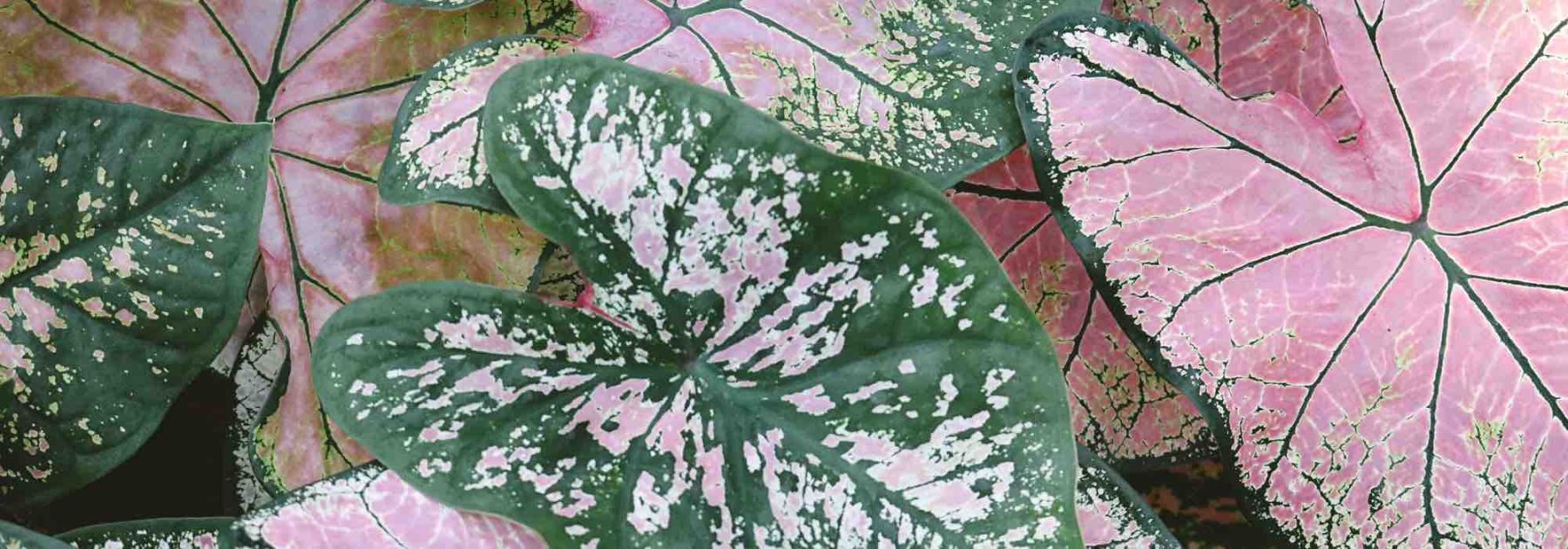
Diseases and Parasites of Caladium Indoors: Identify and Protect Your young plant
Preventing and Treating Angel Wing Naturally
Contents
With its spectacular and colourful foliage, Caladium is a popular houseplant (as well as an outdoor plant). However, it can be susceptible to various issues that affect its growth. Poor watering practices, overly dry air, or poorly drained soil can lead to diseases or encourage parasitic infestations.
Among the most common problems are tubercle rot, pale or deformed leaves, and foliar spots. As for parasites, red spider mites, aphids, scale insects, and sciarid flies may also attack the plant and gradually weaken it.
In this article, discover how to identify these diseases and parasites, understand their causes, and apply the best solutions to preserve the beauty and health of your Caladium.
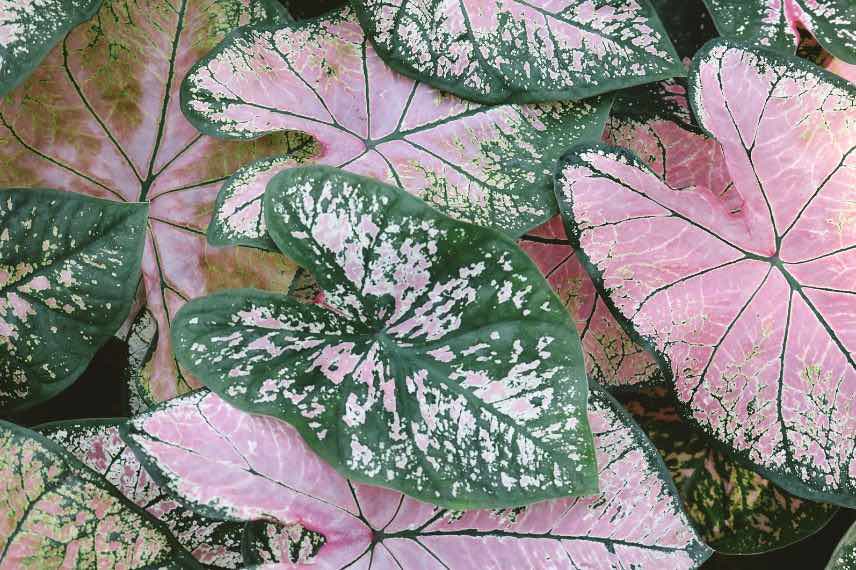
Caladiums, also known as “Angel Wings,” showcase stunning colourful foliage that requires care to maintain its beauty
Common Diseases and Problems of Caladium
Caladium is a robust plant, but certain cultivation mistakes or unfavourable conditions can affect its development. Here are the main common diseases and abnormalities along with solutions to remedy them.
Tuber rot
This manifests as a tuber that becomes soft, blackish and emits an unpleasant odour. A plant affected by this issue may never grow or wither quickly after planting.
This phenomenon is caused by excessive moisture in the substrate, insufficient drainage and/or overly frequent watering. Temperatures that are too cool at planting time can also prevent the tuber from sprouting properly, promoting rot.
Solutions:
- Ensure the tuber is firm and free from soft spots before planting.
- Use a well-draining substrate, enriched with perlite, and a pot with drainage holes.
- Water moderately and allow the soil to dry slightly on the surface between waterings.
- Plant tubers only when temperatures are above 20°C.
→ Consider placing your pots in a mini greenhouse: the temperature will be higher, ambient humidity too, and watering needs—and thus watering mistakes—will be reduced.
Small, pale leaves
A Caladium with small, pale leaves often lacks sufficient light or essential nutrients, indicating insufficient fertilisation or poor substrate.
Solutions:
- Place the plant in a very bright spot, near a window, but without direct sunlight which could scorch its foliage.
- Fertilise every 4 to 6 weeks with a phosphorus-rich fertiliser during the growth period.
- Use a high-quality potting mix, rich in organic matter to promote healthy development.
Weak or stunted growth
If the Caladium grows very slowly or not at all, this often indicates suboptimal conditions. Low temperatures slow its development, and a lack of nutrients can limit new leaf production.
Solutions:
- Maintain a stable temperature around 20-25°C, especially in spring and summer.
- Ensure fertilisation is regular and suited to the plant’s needs.
Curling leaves
When Caladium leaves start curling inward, this often indicates overly dry air or temperature-related stress. This issue is common indoors, particularly during heating periods. Caladium thrives in 50-70% humidity.
Solutions:
- Increase ambient humidity by placing a humidifier nearby.
- Or mist the leaves regularly with non-calcareous water, avoiding excess to prevent fungal diseases.
- Maintain a stable temperature, free from drafts, above 18°C, ideally above 20°C.
→ Note: Some thin-leaved, sensitive cultivars dislike misting, which can cause other issues depending on water quality or lead to leaf spots. A humidifier is ideal.
Leaf spots
Brown or black spots on Caladium leaves can be caused by fungi linked to excess moisture or poor air circulation. If untreated, these spots can spread and cause gradual leaf desiccation.
Solutions:
- Remove affected leaves to limit spread.
- Avoid overhead watering; keep leaves dry during watering.
- Place the plant in a well-ventilated area to improve air circulation.
Powdery mildew
Powdery mildew is recognisable by a white, powdery coating on leaves. It appears in humid, stagnant conditions with poor air circulation.
Solutions:
- Remove affected leaves.
- Apply a sulphur-, baking soda-, or milk-based treatment.
Read our guide to learn about powdery mildew treatments.
Other common issues
Certain abnormalities are also common in Caladium and can be corrected with simple adjustments:
- Yellow leaves: often caused by overwatering or the onset of dormancy in autumn (in which case, it’s normal). Adjust watering and check substrate drainage.
- Soft leaves: indicate either underwatering or excess moisture weakening the roots. Check substrate drainage and adjust watering.
- Brown leaf edges: signs of overly dry air or mineral salt buildup from tap water. Increase ambient humidity and use non-calcareous water.
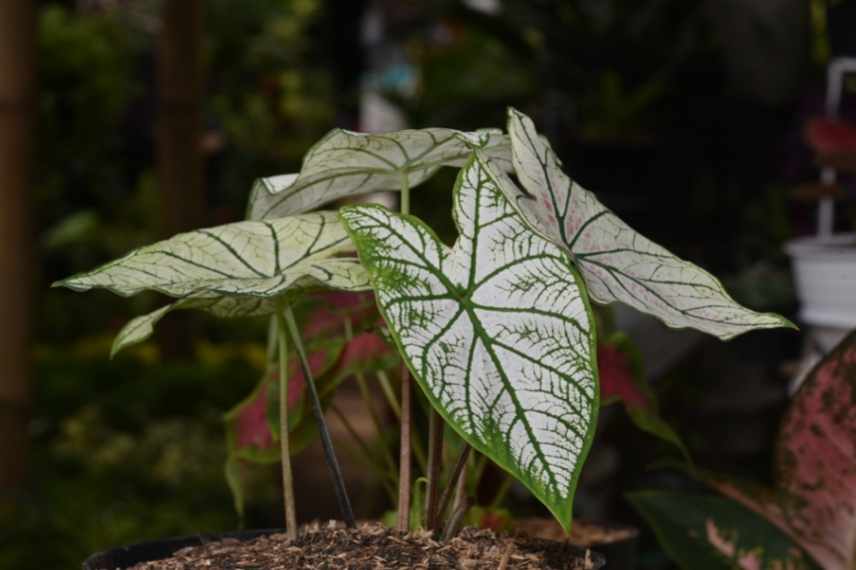
Caladium leaves are delicate and can be quite sensitive
The main parasitic pests of Caladium
Caladium, with its tender and colourful foliage, can be targeted by several parasitic pests that weaken the plant and spoil its appearance. These pests generally develop under specific conditions, such as overly dry air or excessive moisture. Regular monitoring helps identify infestations quickly and take action before they become problematic.
Red Spider Mites
Red spider mites or tetranychids are microscopic mites that proliferate especially when the surrounding air is dry and warm. They attack the foliage by sucking the sap, causing the leaves to yellow and take on a discoloured appearance. Fine webs may also be visible under the leaves in case of advanced infestation.
Solutions:
- Rinse the plant with water.
- Increase ambient humidity by misting the plant or using a humidifier.
- Clean the leaves regularly with a damp cloth to remove mites.
- In case of severe infestation, apply a natural miticide based on black soap or beneficial insects.
→ Discover our treatment advice in our article on red spider mites.
Aphids
Aphids are small insects that cluster on young shoots and under leaves. They feed on the sap, causing leaves to curl and growth to slow. Their presence is often accompanied by a sticky deposit called honeydew, which can encourage the development of sooty mould.
Solutions:
- Rinse the plant with water.
- Spray leaves with water mixed with black soap to eliminate them.
→ Read our advice sheet to learn all about aphids.
Mealybugs
Mealybugs appear as small white, cottony clusters on stems and under leaves. They weaken the plant by sucking its sap, which can cause yellowing and general weakening of the foliage.
Solutions:
- Remove mealybugs manually with a cotton bud soaked in 70% alcohol.
- Apply a treatment based on black soap diluted in water, mixed with alcohol and rapeseed oil.
- Check the plant regularly and isolate infested specimens to prevent spread.
→ Read our article on treatments for mealybug infestations.
Fungus Gnats
Fungus gnats, often called soil flies, are small black insects that fly around the potting mix. The real problem comes from their larvae, which feed on roots and weaken the plant, especially when it is young.
Fungus gnats develop when the potting mix remains constantly moist.
Solutions:
- Allow the potting mix to dry slightly between waterings to prevent larvae development.
- Place yellow sticky traps to catch adults.
- Cover the potting mix with clay pebbles or small stones.
- In case of severe infestation, use an organic treatment based on nematodes.
→ Discover all our advice in our article on fungus gnats.
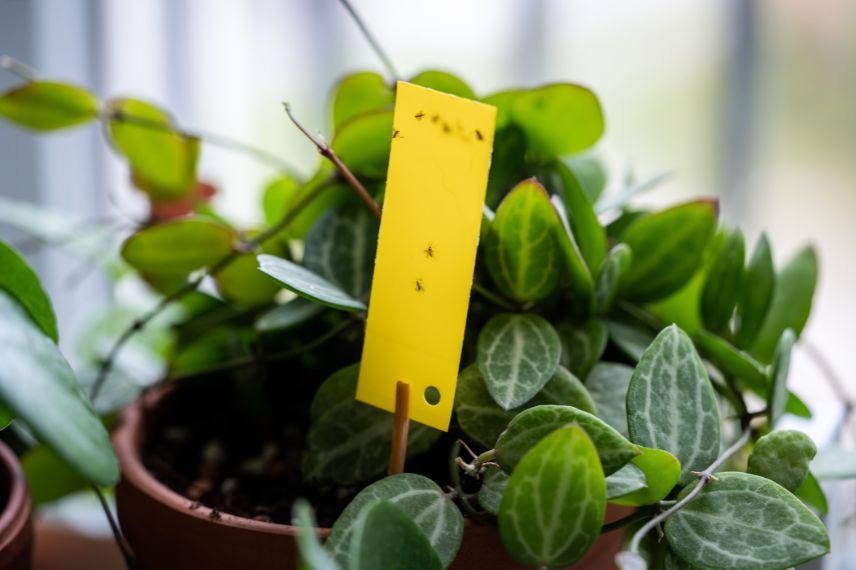
Fungus gnats are trapped using yellow sticky strips, but larvae must also be treated
Pest Prevention
Good prevention is essential to avoid the appearance of these pests. Here are some best practices:
- Maintain a good moisture balance: overly dry air encourages red spider mites, while excess water attracts fungus gnats.
- Inspect leaves regularly, especially their undersides, to detect infestations early.
- Clean the plant often by wiping leaves with a damp cloth.
- Isolate new plants for a few days before adding them to your collection to avoid introducing pests. Inspect them carefully.
- Quarantine any affected plant from your collection in a separate room while treating it thoroughly.
- Subscribe!
- Contents
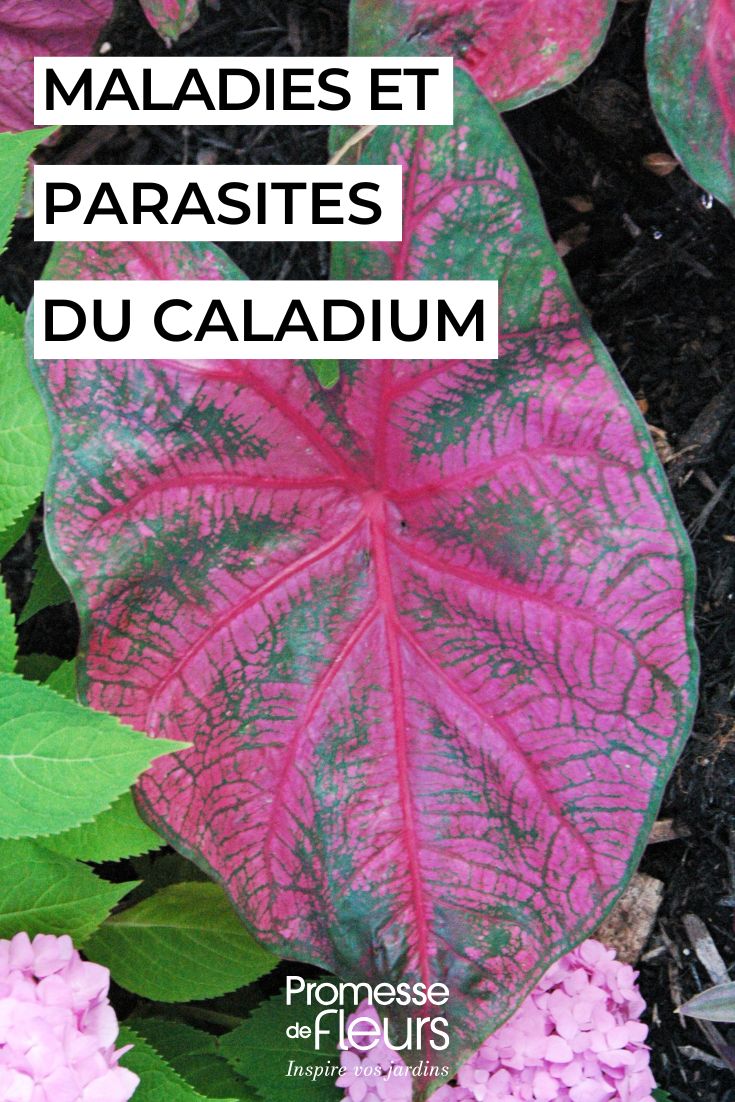


































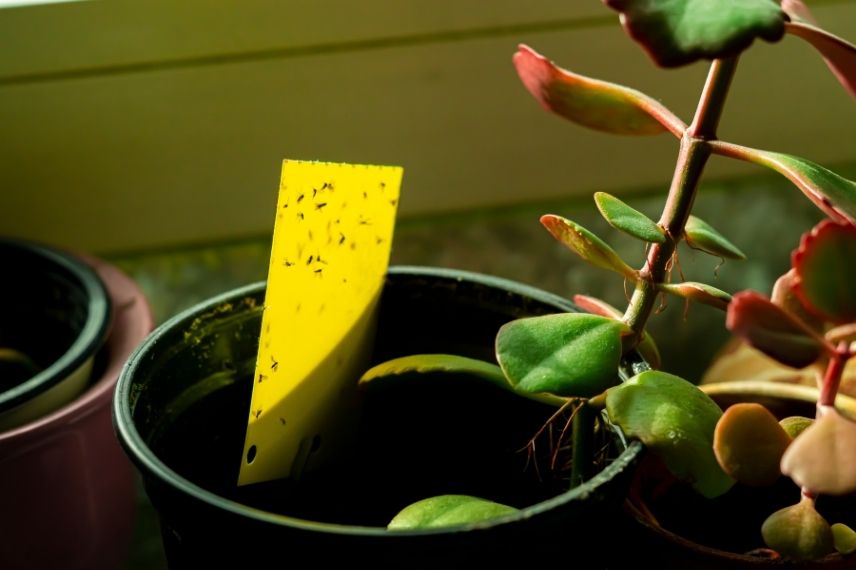
Comments